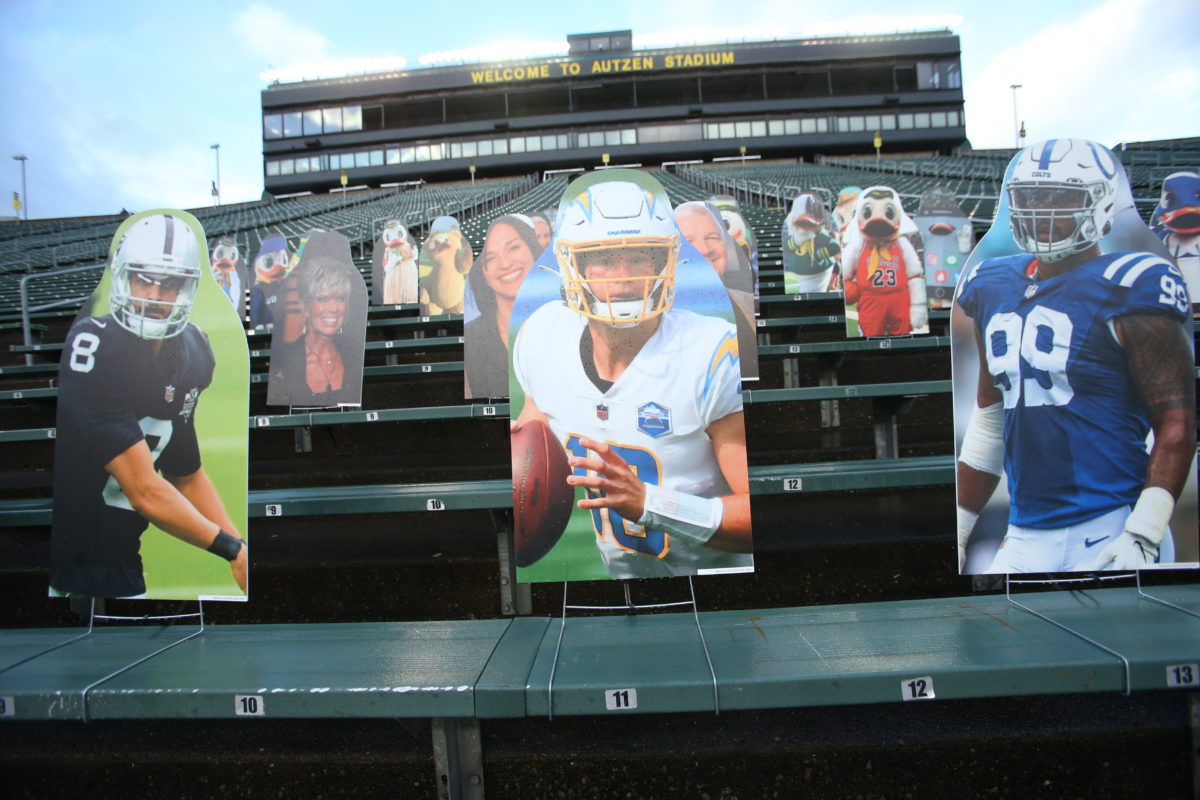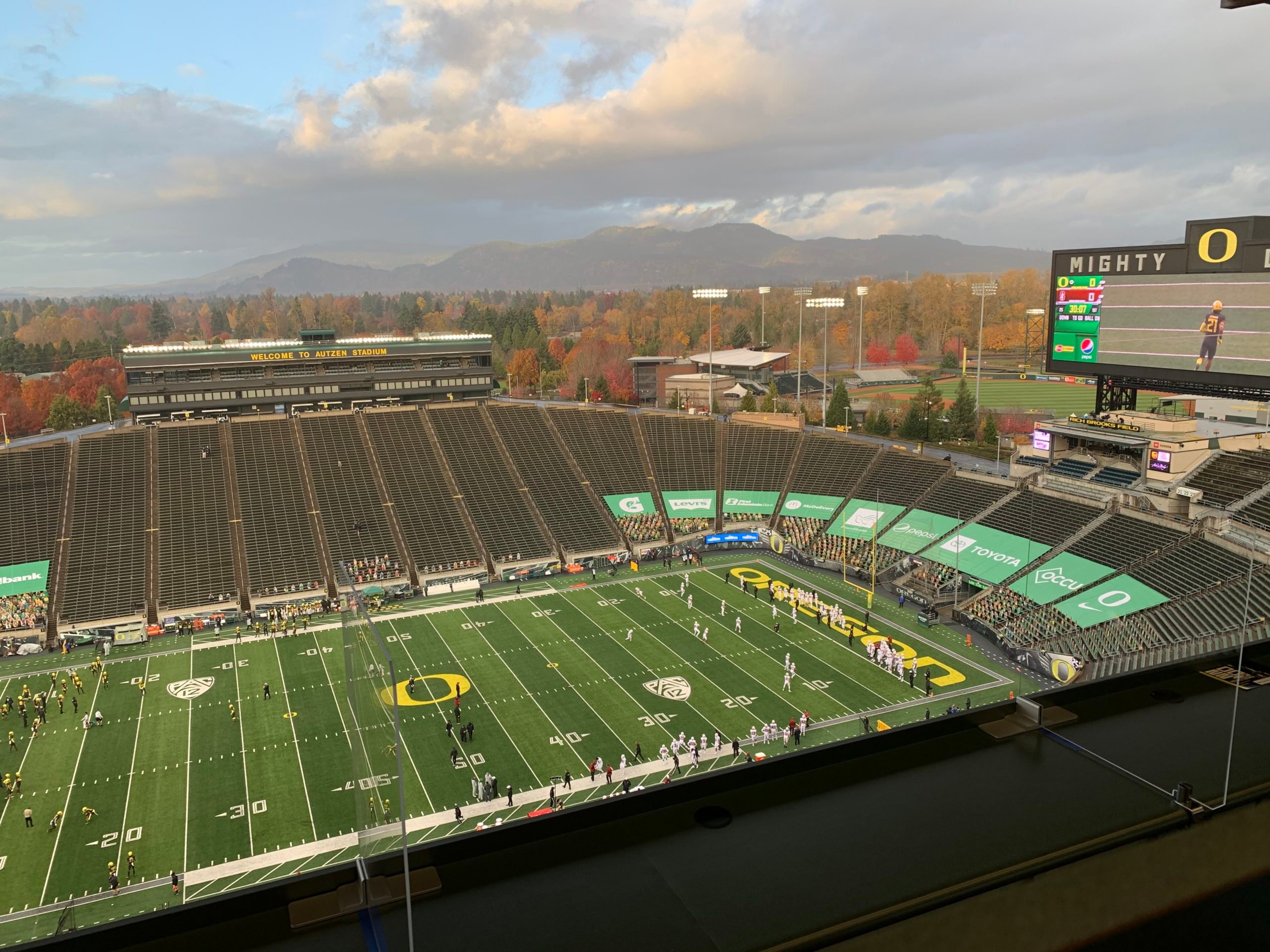Although much of the classic football experience is not possible due to a pandemic, a few keystones of the game remain. For example, the home field advantage.
As a Stanford student living in Portland, I was one of the few spectators able to attend Saturday’s Stanford vs. Oregon game as a reporter for The Daily. There are some positives to remote learning, after all!
The NCAA named Oregon’s 54,000-seat Autzen Stadium as the second loudest college football stadium in the nation, topped only by the reigning national champion, LSU.
On Saturday, however, Autzen Stadium was almost entirely empty — but the Mighty Ducks, minus the fans, can still make quite the din. Although Mario Cristobal and Tyler Shough weren’t heard from the press box, the fight song, a few classic Tiktok jams and a lot of screaming spread across Eugene.
The game started like any other American sports game — be it high school, professional or college — with the national anthem. Fans, myself and the 20 other media personnel, were asked to remove their hats and remain standing for the playing of the anthem. But the ending of the anthem wasn’t marked by the classic cheering, waving, fist pumping and joyous screams — just silence and the blaring of cars on I-5.
Oregon sports — whether it’s the Timbers, Thorns or Ducks — are known for their rowdy and loud fans, so clearly a critical piece of the sports experience was missing. But as the Ducks paraded back onto the field, the speakers jacked up their noise and “Mighty Oregon” was pumped into the stadium through speakers. A sense of pre-COVID-19 normalcy, despite being surrounded by 54,000 empty seats, remained the same.
The stadium was filled with noise for the rest of the game, but crowd noise only arose when the Ducks had a successful play. Little pre-recorded noise was heard for the Cardinal’s few victorious plays. A bit of excitement from the remote crowd was heard for Stanford touchdowns, but the two interceptions of sophomore linebacker Levani Damuni ’23 lacked any remote enthusiasm. Instead, Stanford players’ shouts of support from the sidelines echoed up to the press box.
Occasionally players looked to the empty stands, filled with a handful of plastic cutouts of die-hard Oregon fans, to celebrate or garner momentum. The jumbotron even displayed a “Get Loud!” banner for Stanford’s field goal attempts. After Stanford’s two touchdowns and the connections junior quarterback Jack West made with junior wide receivers Michael Wilson and Simi Fehoko, I felt the urge to cheer but had to catch myself given the situation.

But, throughout the game, reminders to wear a mask at all times kept reality in check.
“We thank you in advance for complying with COVID regulations in Oregon and Lane County,” said the stadium announcer, “It’s very important we follow those regulations.”
And during halftime and timeouts, rather than turning to friends around you, jumping up and down to be featured on the Jumbotron or running to grab snacks from concessions, the few people in attendance and fans watching on TV were kept busy with remote engagement. Stanford Football tweeted a trivia game for fans to enter and win Stanford gear, and Oregon Athletics provided opportunities for fan engagement as well — fans could pay to be represented as plastic cutouts in the stadium and send in videos of them dancing to “Shout,” an Autzen classic, which were shown at preceding the fourth quarter.
Despite the lack of in-person engagement and accurate representation of cheering, the excitement of physically being in Autzen and watching Stanford head coach David Shaw ’95 and Oregon’s Cristobal’s teams stayed the same.
You can take the fans out of Autzen and Stanford Stadium, but you can’t take football from Duck and Cardinal fans.
Contact Harper Hummelt at hummelth ‘at’ stanford.edu.
